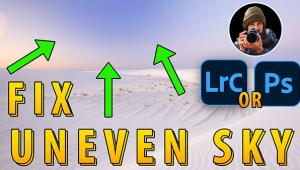Digital Help
Q&A For Digital Photography
| This column will attempt to provide solutions to problems readers may have in getting into and using digital cameras, scanning, and using digital photographic images with a computer and different kinds of software. All questions sent to me will be answered with the most appropriate information I can access and provide. However, not all questions and answers will appear in the column. Readers can send questions to me addressed to Shutterbug magazine, through the Shutterbug web site, directly via e-mail to: Fotografx@csi.com or by US Mail to: PO Box 2830, Lompoc, CA 93438. Q. I subscribe to
Shutterbug and have found your Digital Q&A section to be very helpful.
I am a bit confused on one point and was hoping you could help clear
things up for me. A.
Printer resolution refers to the number of dots the printer lays down
per inch and is unconnected entirely to how many pixels per inch are
in the image being printed. Standards are not fixed as to what a printer
needs in image resolution, and the high 1440dpi resolution of your Epson
EX is no indication of the image ppi resolution required to make a good
quality print. However to see the most detail a particular printer is
able to reproduce there is an optimum image resolution, which with your
Epson, is 240ppi or higher (you are right). That specification is for
an image of about 8x10" printed on letter size paper. In practical
terms with most images you can go as low as 180ppi in image resolution
and still obtain quite good quality prints with little if any loss of
image detail or sharpness. Q. I have enjoyed
reading and appreciate your thoughtful column in Shutterbug. The following
question stumps me, but I hope it will not stump you. A.
I can appreciate the reasons for your need in a digital camera. And,
you are probably not alone considering the real estate industry uses
digital cameras so extensively. I'm sure the manufacturers would
like to meet this demand. However, if you consider the very small physical
dimensions of the CCD chips used, 1/3 to 1/2", and that the modest
wide angle lenses for these cameras currently available are slightly
under 10mm in focal length, anything shorter would involve some severe
physical production challenges. The one most limiting factor would likely
be making a shutter/aperture for a lens of any shorter focal length.
It's not impossible but that kind of very precise micro manufacturing
is also very expensive, and without extreme micro precision, the aperture
accuracy and the optical imaging quality due to halation would suffer. Q. Recently on a
holiday I stumbled across a back issue of Shutterbug and was interested
to read about the development of digital adapters which effectively
turn basic 35mm SLRs into digitally enabled cameras. The article was
in the December '98 issue and was contained within a feature on
the photokina '98 exhibition. A. Yours is a wish held by many, even myself, but unfortunately I know better. First you have to consider essentially what you are looking for is an inexpensive Kodak DCS 560, or at least the back and digital parts. That camera model costs as much as a new sports car, and personally I'd rather have the car. You can be assured, that if it were possible to produce a back for any of the major 35mm SLRs which would, 1) provide normal or close to normal lens functioning (angle of view), 2) have a chip resolution comparable to a scanned 35mm image, and 3) cost as little as you are hinting Joe Public could afford--Canon, Nikon, Olympus, Minolta, et al., would be the ones offering this kind of digital back for 35 SLRs at the next Photo Marketing Convention. The why of this is quite simple. CCD area array sensor chips cost far more to develop and involve a far larger manufacturing investment than any camera. In other words, it is less expensive to design and build a camera to fit the chips available than try to resolve the problem the other way around. Q. I found your recent
columns in relation to large volume digital slide storage and scanners
very useful. My father recently died and had a huge number of slides
dating back to the 1940s. I have purchased the Nikon LS2000 scanner
and a CD writer drive. The SilverFast software will be ordered today. A.
From your remarks I am somewhat of the impression the prints you find
inferior are not as good as the printers can produce, not because of
the printer but due to characteristics of the image file reproduced. Q. What is the maximum
usable resolution and color bit depth of films, like Ektachrome and
Elite Chrome? A. In
theory there is no maximum, but in practice of course there is. And,
there is really no direct correlation between how most of us think about
analog information in terms of resolution and the digital counterparts.
In real terms the answers to these questions are involved in what your
goals are in digitizing film images, and of that what you can afford.
High-end scanners today are capable of reading and recording just about
all of the useful information in a film image, and then some. Extremely
high (up to 8000dpi optical) scan resolution is used not so much to
extract more image information from a film photograph, but to record
it with sufficient pixels to make a reproduction of a particular large
size. So to one extent in determining scan resolution the output size
is the determinate factor. From my experience a resolution much over
3200dpi does not yield increasing amounts of image information, and
the 2700-2800 maximum resolution of consumer desktop 35mm scanners extract
most of the image information from a 35mm Ektachrome image. |


































